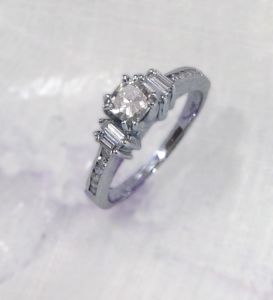Google announced a new branding identity to the world on September 1, 2015. Read more about Google’s logo update on its official blog. Certainly other brands look to Google to take the lead in innovative branding. Whether you love or hate the new Google logo, it was updated for some very practical reasons. The font has changed in the GOOGLE word mark. In addition, the lower case “g” icon is replaced with the upper case “G” which identifies most of its apps. Google’s trademark modifications are strategic and purposeful design changes that accommodate users who are moving away from laptop use and are moving towards use on a tablet, mobile phone, or other smaller devices, such as a watch. These new marks signify that Google believes that the momentum towards mobile media is here to stay.
Google’s choice of font style in conjunction with the bright primary colors of the new logo will be easier to read in smaller fonts and on smaller devices. In addition to the GOOGLE mark being redesigned, the company introduced a new mark, the “G” logo. The new upper case “G” logo incorporates the four primary colors found in the word mark, improving the aesthetic look and increasing the bold visual appearance for smaller screens. Now if there comes a time when the GOOGLE mark is too small in visual appearance, the company has the option of using the “G” logo mark as an alternative.
In addition, to the two new marks Google introduced to the world, a third animated mark was launched. See Google’s official blog page and view the new animated mark, click on the play button for the video and the animated mark appears towards the end of the short video . This mark is also based on the primary colors of the GOOGLE word mark. It contains four dots blue, red, yellow and green that move about in several different patterns before coming back together to form the GOOGLE word mark or the “G” logo.
 New York Trademark Attorney Blog
New York Trademark Attorney Blog


